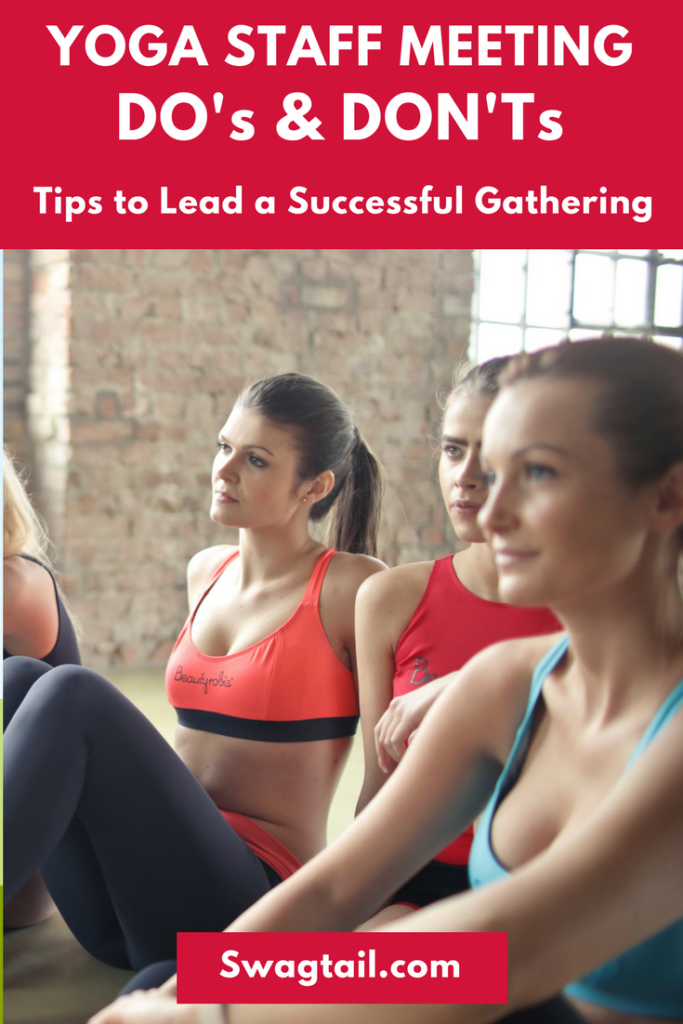
I had the pleasure of observing a recent yoga staff meeting in which all teachers of a studio came together to discuss the upcoming year. It became clear what strengths and weaknesses were present in this studio. While the owner was well-intentioned in bringing the group together, the lack of organization, communication skills, and leadership traits caused those intentions to fall short. Unfortunately, very little was accomplished during, or after, the meeting as a result.
This blog post is intended to give you the inside scoop on the do’s and don’ts of running a successful meeting of your own. By following these simple steps, and incorporating these principles, you can bring more harmony, clarity, and efficiency to your group. This translates to a more connected and uplifting team in which to serve each other, your students, and your community at large.
STAGES OF PLANNING & LEADING A YOGA STAFF MEETING
Preparation before a meeting is just as important, if not more so, than the running of the gathering itself. To simplify the process, we break this down into five basic stages.
First Phase: Set an intention for the meeting
- Why do you want to bring the group together?
- What do you hope to accomplish as a result?
Second Phase: Schedule the meeting
- When do you want the meeting to take place?
- Where do you want it to take place?
- How will you notify the team of the meeting?
Third phase: Prepare for the meeting
- What topics will you cover during the gathering?
- How much time will each topic be discussed?
- Are there any materials that will need to be created for the meeting?
- If so, what are they and when do you want them to be completed? Distributed?
Fourth phase: Run the meeting
- What activity will be used at the beginning of the meeting to break the ice?
- When will you pass out any materials for the meeting (if using)?
- If, and how, will you facilitate a Q&A session?
- How will you end the meeting?
Fifth Phase: Meeting follow-up
- When, and how, will you reach out to your team following the meeting?
- What information do you want to gather after the meeting?
- With whom will you need to schedule individual conversations or get-togethers?
Now that you have an overview of the steps to take, let’s get into the details. There are practical do’s and don’ts within each of these stages, that when followed, can magnify the success for each person involved. Examples from the studio meeting I attended are also included to provide even more clarity.
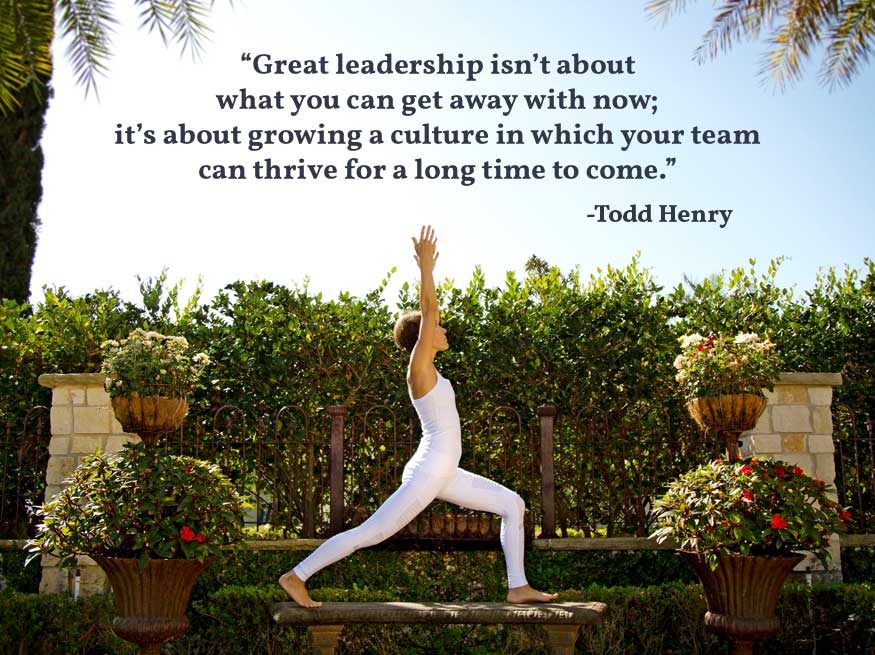
PHASE 1: SET THE INTENTION BEFORE THE MEETING BEGINS
There are many reasons you might want to bring your team together for a meeting. You could want to have the teachers get to know one another. There might be changes being made at the studio, all of which you want them to understand. The studio might be offering all sorts of wonderful trainings, programs, and retreats that you want teachers to be aware of, and promote, to their students. Perhaps, you just want to have the teachers be more aware of the others in the group so your studio gives off a harmonious, welcoming, competent vibe. In any case, set your intention with as much clarity as you can before the meeting begins. This intention could be organized in the form of a list or as a mission statement.
DO:
- Share the purpose of the meeting with your staff when you notify them of the scheduled meeting date
DON’T:
- Skip this step (Seriously! This sets the tone for you as a leader and for your group in more ways than just the meeting itself).
PHASE 2: SCHEDULE THE MEETING
MEETING TIME
Yoga teachers (although amazingly-talented and heart-centered people) lead full, busy lives. Many of them have families, multiple-teaching locations, and schedules that might many other professionals cringe. That being said, getting a group of teachers together for a mandatory meeting might be one of the most challenging hurdles to start the meeting off right.
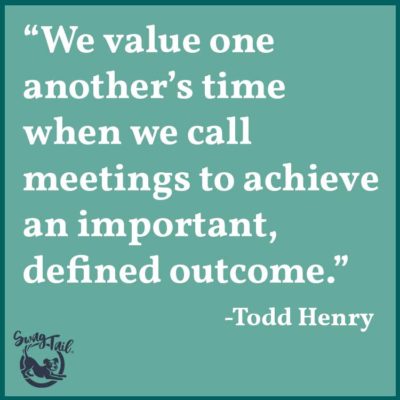 DO:
DO:
- Schedule a date for the meeting well in advance (at least a month).
- Plan a time for the meeting to start and a time for it to end
- Stick to the date and time frame that works best for most teachers.
- If you want to make the meeting mandatory, provide a few dates and times for your teachers, then let the group respond with their top 1st, 2nd, and 3rd choices. Then you will have an idea which day and time slot most people can attend.
DON’T:
- Make lots of changes (especially last-minute ones). In the case of this particular yoga studio, the date was changed twice, and the time it started three times. Not only did this create a bit of confusion, it made it tough for the teachers to fit the meeting into their schedule. And, many of these changes took place less than a week before the date of the meeting.
MEETING LOCATION
Ideally, you have a wonderful yoga space in which you can house your entire team for a meeting. If the meeting is more casual, like a get-together, then perhaps hosting the event at your home, or a restaurant or another location might be more suitable. However, if the meeting is more serious in nature, and you want the team to genuinely connect, then having an undisturbed space is of utmost importance.
PLEASE DO:
- Find a quiet, undisturbed space to hold an important meeting.
AVOID:
- Having the meeting in a loud, public space if the meeting is important. The meeting I attended was in the lobby of the owner’s condo. There was a constant flow of families and dogs walking through the room, many of whom wanted to say hello to the owner in passing. And, at times, the volume of lingering conversations by them echoed so loud in the space the owner’s voice could not be heard at all.
NOTIFY THE TEAM
We have numerous channels through which we can communicate today. Find the ways in which you can most easily communicate with your team, and stick to that. When you bring new yoga teachers on board, make sure they are aware of how you will be sending them important studio information. You may choose more than one way to communicate–such as text messaging for finding subs and emails for studio updates. In this case, just make sure you notify teachers in the most familiar channel used within your team.
BE SURE TO:
- Give advance notice of the meeting via known channels of communication.
- Share your mission, or intention, of the meeting with the team. This gives them a way to set their own expectations for the gathering.
- If you switch channels, notify your team immediately. Perhaps you want them to call or text you directly should they have questions. This will refrain from involving, and confusing, the group.
- Specify any logistical information that the team would need to know before they arrive. This could include the type of attire you request they wear for a group photo or a list of materials you’d like them to bring the day of the event.
STAY AWAY FROM:
- Multiple forms of communication, in which mixed messaging can result. This particular studio sent out an email regarding the upcoming meeting. Then, as the meeting approached, a voracious stream of group texts went out. This only added more confusion to the logistical aspect of the meeting (and the meeting hadn’t even started yet!)
PHASE 3: PLAN THE MEETING
Once your team has committed their time and energy to meet with the group, you demonstrate your respect for them by maximizing your time together. This means putting an efficient plan in place ahead of time.
DO:
- Decide how you want to start the meeting. Starts matter and the beginning of a meeting sets the tone for the rest of the event. How will you bring the team together from the moment they arrive? Will you have an activity for new teachers to more effortlessly blend with the existing team?
- Make a list of topics you want to cover.
This is especially important in logistical meetings. Decide what you want your team to know. List changes that are taking place at the studio. Then, once you have these topics, decide how much of the meeting this portion will take. - Put together any visual materials that could accompany your main points to cover during the meeting. I highly recommend that you create a one-page document to pass out at the meeting. This way teachers have something to look at, and take notes on, during the actual discussion.
- Schedule time for Q&A and/or a discussion by the group.
- Plan an ending. Studies have shown that people remember endings more than anything. Even if teachers cannot remember all of the details of the meeting when they walk out of the door, you do want them to leave feeling excited, energized, and more connected to the team than when they walked in the door.
DON’T:
- Skip this step. This part of the process will set you, and your team, up for more success than you can imagine.
GET CLARITY FROM YOUR TEAM
A meeting involves talking and listening for all involved. Many studio owners want to push their own agenda on their team. Yet, this dictatorial approach might work in the short run, but won’t usually last long term in building a harmonious, successful studio. Getting information from your team before the meeting takes place will help you better plan for the event, and be able to maximize your time when it arrives.
DON’T:
- Assume you know the needs and desires of your team. The studio I witnessed in action was a one-way conversation, flowing from the studio owner to the group. It was obvious that no feedback was requested before the meeting took place.
INSTEAD:
- Send out a separate email, perhaps closer to the meeting, of the mission and focus of the event. In that email, ask specific questions to get input from your team.
- Plan a way to integrate instructor feedback that has been provided to you prior to the meeting
- Make sure teachers know they can email you their responses prior to the yoga staff meeting if they want to remain anonymous. They can also bring their questions on the day of the gathering
SAMPLE QUESTIONS TO ASK YOUR STAFF:
- What is working at our studio? (It’s nice to hear what is going well.)
- Where could our studio improve? (It’s essential to make changes in order to stay cutting edge, relevant, and able to serve your community effectively)
- In what ways can the studio better support you, and the team? (You want to know where the teachers need the most help, in general)
- Do you have any feedback about your classes?
- What is going well with your classes, and where you might have concerns? (Their answer to this provides clarity about the various styles, time slots, and other details about classes at your studio. Your teachers are those on the front lines, and hearing their perspective will help you navigate movement forward)
- Is there anything going on in your life that might affect your ability to be fully present, and part of this team? (When you ask this, you show that you care more about them than just the business they bring to your studio. It demonstrates you care about their entire well-being).
- Do you have any questions for me? (This allows them to co-create in the process of the studio)
PHASE 4: RUN THE MEETING
This should seem like one of the easiest parts of this process if you have taken the time and due diligence in the other three phases. Keep your big pictures goals for the studio in mind, the intention that you have for your team, and the heartfelt connection to why you love yoga and own a studio in the first place. With these ideas in mind, you can be the most efficient and present.
BE SURE TO:
- Welcome the group warmly.
- Put your ice-breaker, or group activity, into action as the meeting begins (or, have it get started when the first few people arrive and allow the others to join in). This will save time and get everyone involved immediately.
AVOID:
- The need to do all of the talking. Make sure to get group input.
- Losing track of the time. The studio meeting I attended went 1 hour over the scheduled length, without any consciousness about doing so. Your teachers carved out time to be there. Respect it by starting and ending as you stated prior to the meeting.
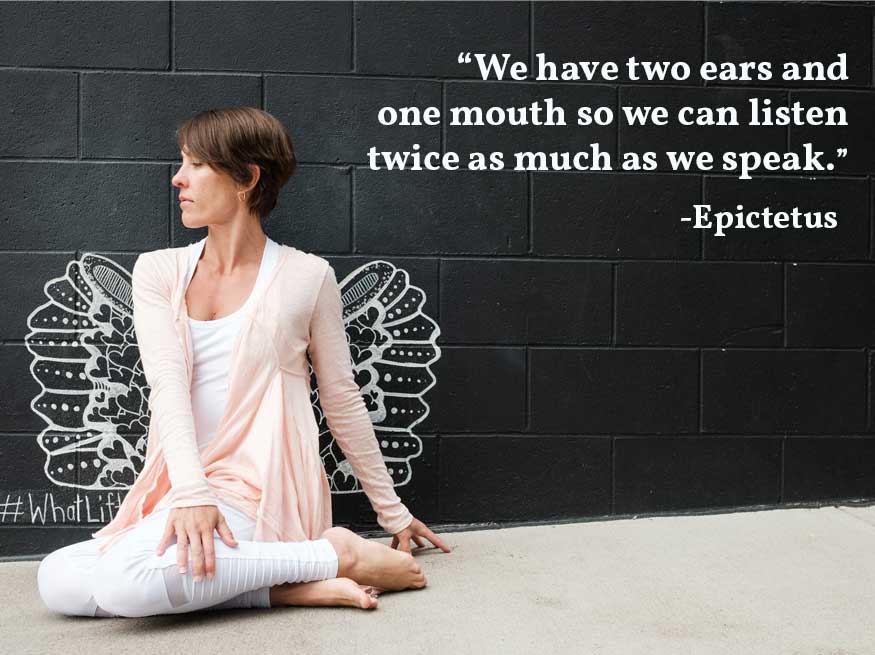
PHASE 5: MEETING FOLLOW UP
Each yoga teacher on your team has a unique relationship with you, as the owner or manager, and has specific needs to facilitate their own professional growth. By following up with your staff, you gain a multitude of benefits. These include:
- Specific feedback on the recent meeting experience. This provides learning before the next one takes place.
- A stronger connection to your team. This bond is palpable by each person who walks into your studio, whether you are aware of it or not. This unseen harmony speaks volumes about your community and can be a huge factor that determines your long-term success.
- Respect for you as a leader.
DO:
- Summarize the meeting, and the outcomes of the meeting, for your staff.
- Be specific about actions that are needed by each team member, if any are applicable.
- Send out that information within a day or two of the meeting, while the interaction is still fresh in their mind.
- Be consistent with the form of communication you use with your staff.
DON’T:
- Assume everyone will be on the same page after the meeting.
PUTTING IT TOGETHER
Once all of these phases are complete for your yoga staff meeting, you can decide when your next one will take place and follow the 5 phases all over again. Hopefully, you will gain more wisdom and insight each time you meet with your team, and you’ll all find a way to work together, magnify the success of each group member, and have more clarity on the direction of your team moving forward.



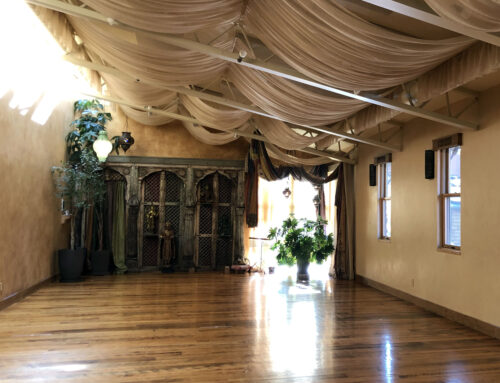





Leave A Comment